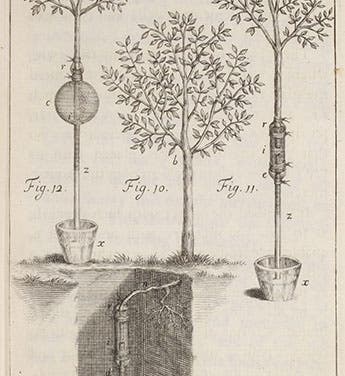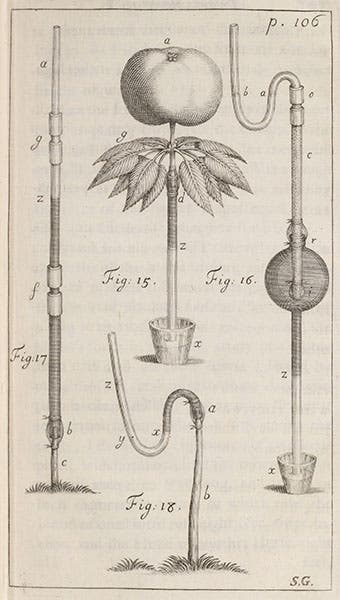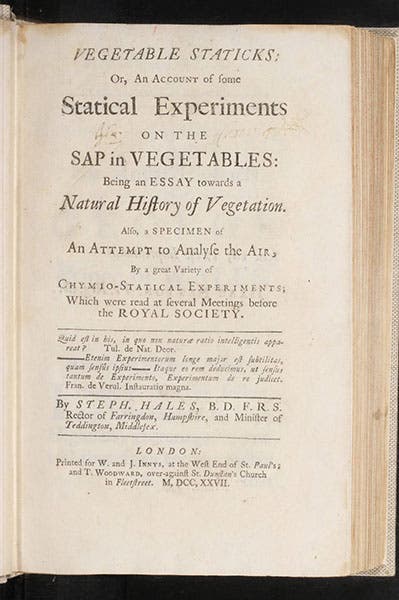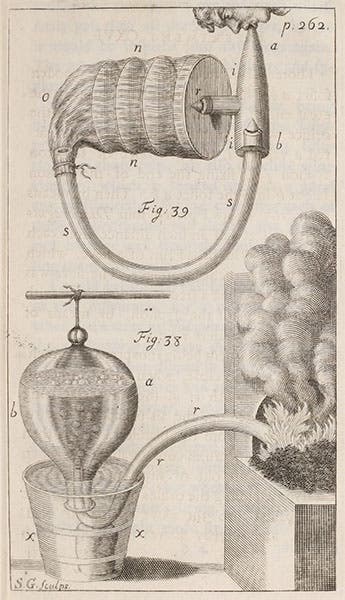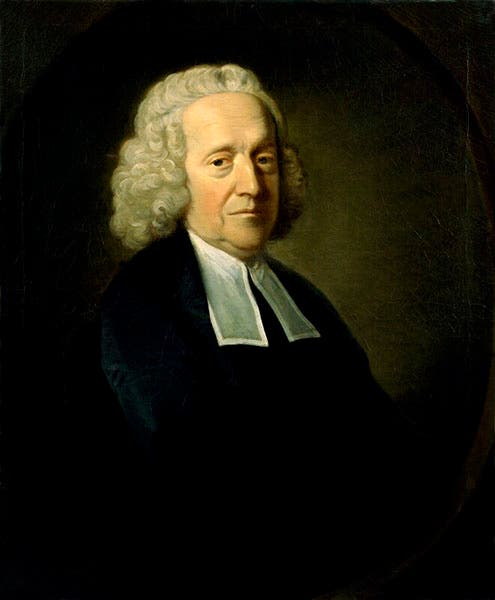Scientist of the Day - Stephen Hales
Stephen Hales, an English physicist and plant physiologist, was born Sep. 17, 1677. Hales was an ardent follower of Isaac Newton, and he attempted to find the same laws and regularities in plants that Newton had found in the inorganic world. Between 1723 and 1725, Hales did an elegant series of experiments on living plants, exploring how fluids and gases move within them, and whether the sap circulates in plants, as blood does in humans (belief in plant circulation was common; Hales found that it did not occur). By exposing the roots of a pear tree, severing one root and attaching the stub to a glass tube filled with water and connected to a barometer, he was able to measure both the quantity of water that passed through the root system, and the pressure of transport (first image).
By covering the dirt surface of a sunflower in a pot with a lead sheet, he was able to measure the quantity of water added to the pot, and by weighing the pot, how much water must pass to the leaves and evaporate (or “perspire”, as Hales put it) (second image).
To see whether fruit respired as well as leaves, he cut off a twig with a Russet Pippin still attached, placed it in water, measured the uptake, then removed successively the apple and the leaves, and discovered that most of the respiration takes place through the leaves. Hales was truly the father of plant physiology, and he published an account of his experiments in a book called Vegetable Staticks (1727), which we have in the History of Science Collection (as well as several contemporary translations into French and German).
But Hales’ most famous contribution to experimental science was a new piece of laboratory apparatus for chemistry—a science that Hales cared little about. He needed some way to collect gases being given off by plants, so he came up with the idea of conducting these gases, via a glass tube, to a bottle that was inverted over a water bath. If the bottle were filled with water to begin with, then as the gas bubbled up into the bottle, it would displace the water, and soon you would have a vessel filled with the gas, which you could cork and carry elsewhere to test.
The device came to be called the “pneumatic trough”, and most of the gas discoveries of the last half of the century—hydrogen, oxygen, and nitrogen—would not have been possible without it.
The portrait of Hales, attributed to Thomas Hudson or his studio, is in the National Portrait Gallery, London.
Dr. William B. Ashworth, Jr., Consultant for the History of Science, Linda Hall Library and Associate Professor, Department of History, University of Missouri-Kansas City. Comments or corrections are welcome; please direct to ashworthw@umkc.edu.

